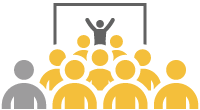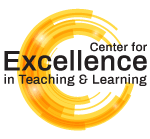| |
CETL | Canvas | AI Guide | Course Design | Online | Software | Workshops
Teaching Observations
The observation strategies listed below are designed to facilitate the professional growth and development of faculty in a climate of trust and fairness.
 Context Context
Gathering and assessing evidence of instructional effectiveness is critical to our growth and impact as teachers. From a developmental standpoint, we learn from our experiences in the classroom and seek to adapt and adopt instructional innovations in a genuine effort to engage and enhance learning. In doing so, we benefit from the input of others. Indeed, the primary sources of information central to critically reflective pedagogy include students (and therefore student evaluation of instruction) and our colleagues (teaching observations). This document presents a method of teaching observation that is at once formative and summative. It is designed to facilitate the professional growth and development of faculty in a climate of trust and fairness according to criteria representative of the many facets of effective instruction and observation.
Purpose
While there is a consensus on the value of teaching observations, there also exists a need for a guiding set of principles and practices designed to facilitate process. In an effort to help our colleagues at all levels evaluate instruction fairly and formatively, and to yield results that can simultaneously improve instruction and inform assessment, the Teaching Observation Form listed at the bottom of this page has been developed by the Center for Excellence in Teaching and Learning (CETL). It represents evidence-based practices drawn from the literature, empirically validated efforts of other institutions and, importantly, the input and interests of our own academic community.
Practice
As with any assessment of instruction, teaching observations must be understood and exercised with sensitivity to the context of the class, the curriculum, and the larger teaching and learning process. Teaching observations must recognize a number of factors that may influence the observed session, the class climate, and the learning environment itself. Teaching evaluators must do more than simply observe; they must learn about the class, the instructor's teaching philosophy and methods, and learning goals. They must communicate effectively and constructively with the colleagues they are evaluating prior to and after the session, and during the session they must be genuinely present. Specifically, as a process, teaching observations are divided into three steps: the pre-observation visit, the class observation, and the post-observation meeting. For each step, there exists several evaluative criteria and, as a practice, evaluators are encouraged to be mindful, attentive, engaged, and observant.
The forms listed at the bottom of this page look detailed, but evidence shows that with just a little experience, good observation practices become second nature and enriching to the observed and the observer alike. Additional information, strategies, and support are available through the CETL.
 CETL Observation of Instruction CETL Observation of Instruction
Small Group Instructional Diagnosis (SGID) &
Student Feedback through Consensus (SFC)
Interested in taking observation to the next level? Interested in strategies that value student input and enhance the teaching and learning experience in real time?
If so, read on.
This section provides an opportunity for faculty to learn more about, directly request, and arrange for training on how to conduct Small Group Instructional Diagnosis (SGID) and Student Feedback through Consensus (SFC).
These powerful strategies supplement traditional observations by providing an opportunity for the observer to converse with the students about their perceptions of the learning experience and environment, to contextualize teaching and learning goals and strategies for and with the students, and to assist the instructor in developing an appropriate response to the feedback. Typically, the facilitator works with a faculty member to create a list of topics or questions that will guide student discussion to generate through consensus a clear and prioritized inventory of student feedback. Unlike a traditional observation, where the observer usually remains silent, almost hidden so as not to contaminate the environment, after a predetermined amount of time, the professor leaves the room and the facilitator stays to talks to the students. In this climate of trust, students constructively (and confidentially) share feedback on what they think is working, what's not, what is clear, and what's not, to a neutral party. The facilitator then transmits this feedback to the instructor and collaborates with him or her on developing an appropriate pedagogical response. Finally, the faculty member demonstrates the value of student feedback and her or his commitment to their learning by responding with gratitude to their input and introducing instructional strategies directly linked to student input. With proper training and facilitation, this is a great way to get or keep a class on track.
Our CETL Director, Brian Smentkowski, has specialized training in this technique and is on-hand to both conduct and "train" observers on how to conduct SGIDs and SFCs. Please email Brian to set up a session as an SGID/SFC facilitator or to learn how to conduct SGID and SFC sessions.
RESOURCE MATERIALS
|



 Context
Context CETL Observation of Instruction
CETL Observation of Instruction